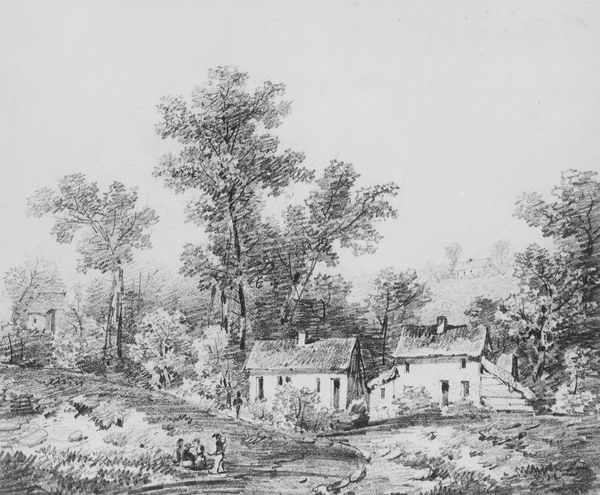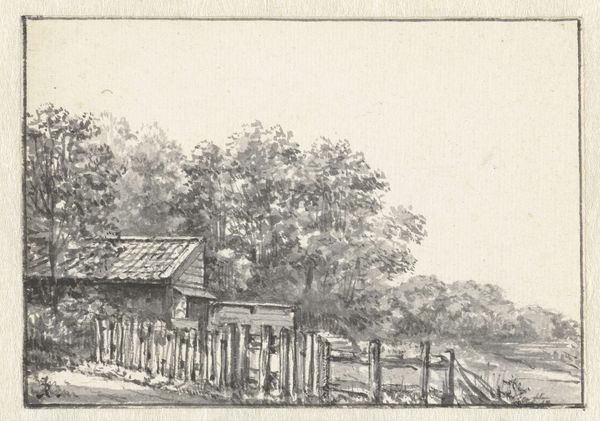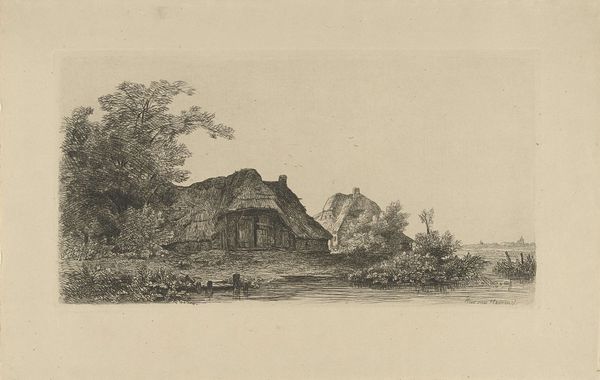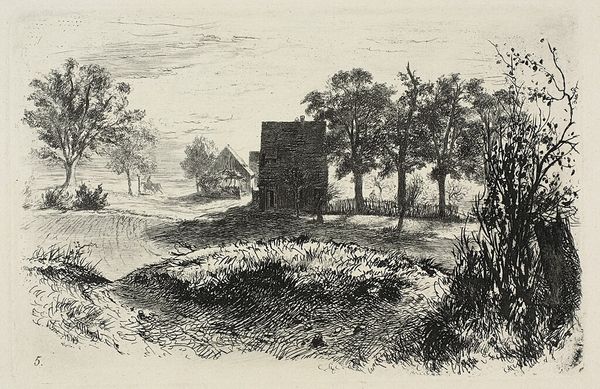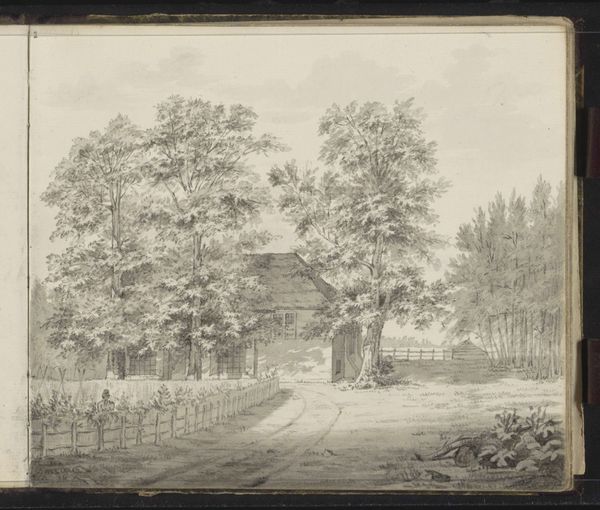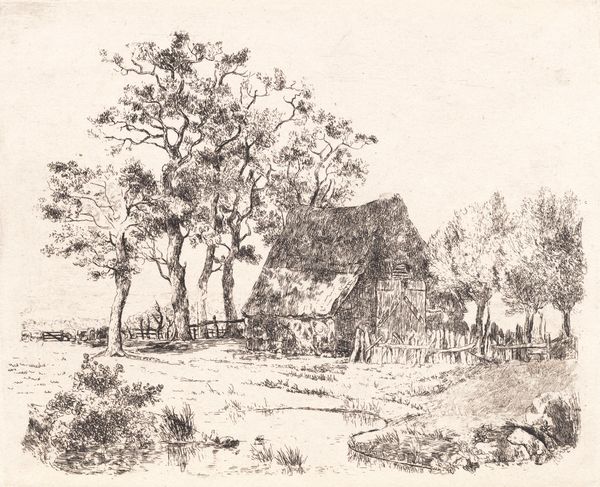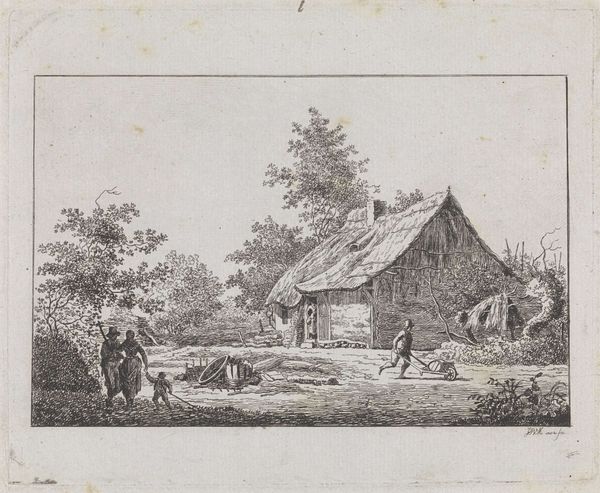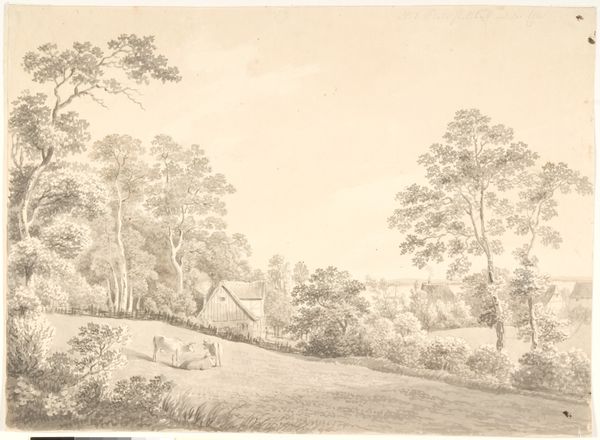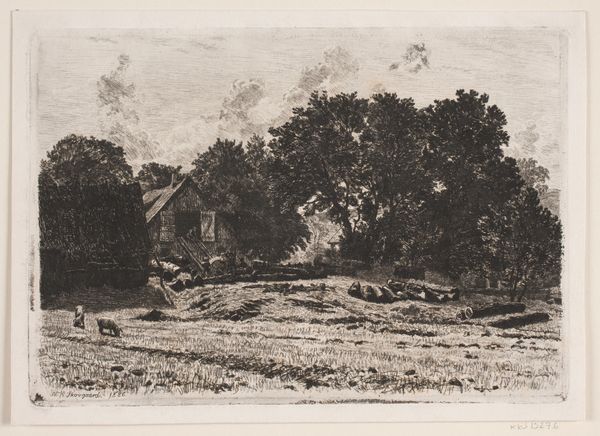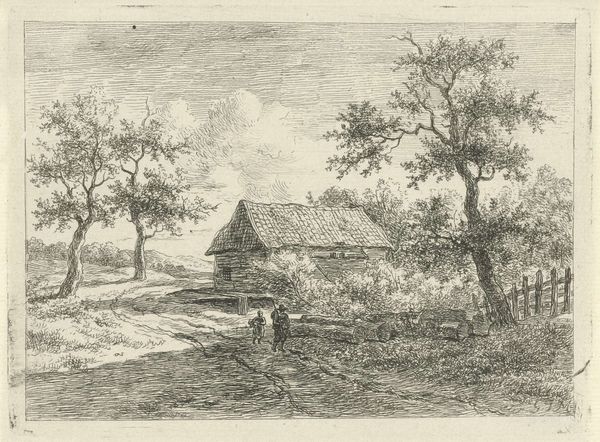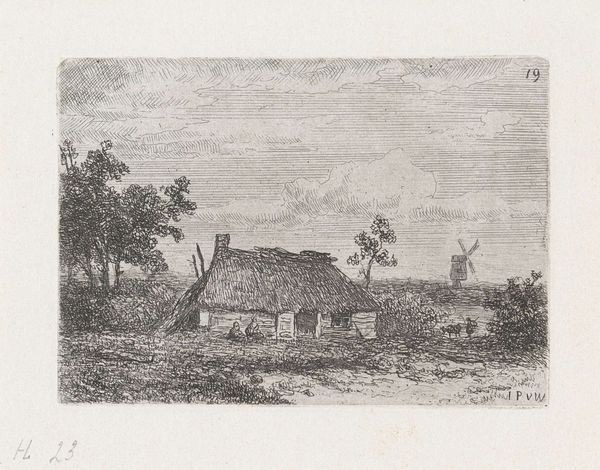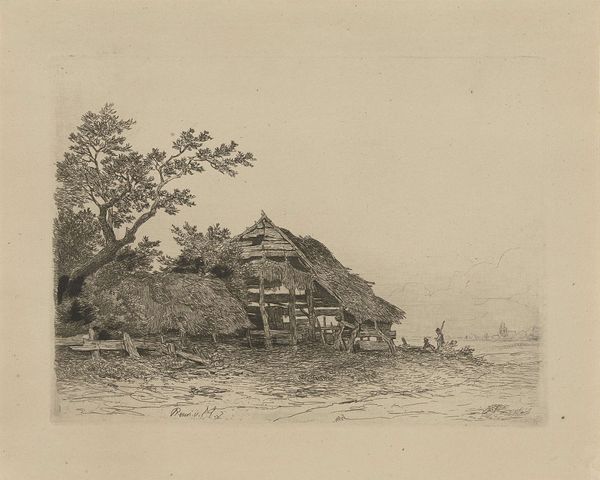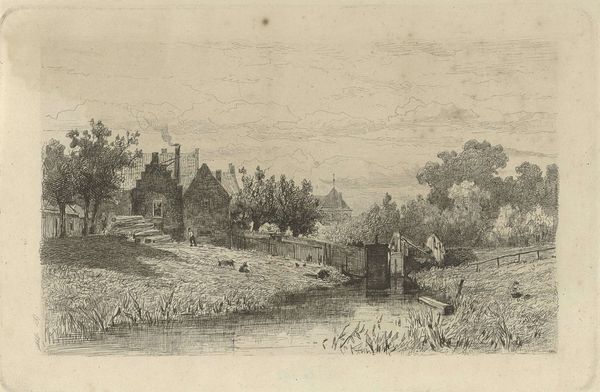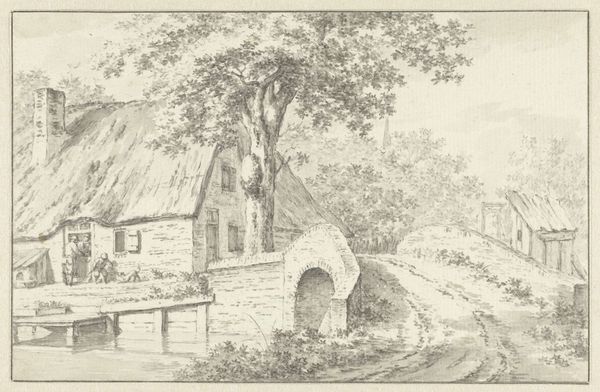
photography, site-specific
#
landscape
#
photography
#
site-specific
Dimensions: height 215 mm, width 280 mm, height 385 mm, width 440 mm
Copyright: Rijks Museum: Open Domain
Curator: What immediately strikes me is the layering – the foreground vegetation feels almost overgrown, obscuring our view slightly, before leading us back to those more formal structures. There’s a tension here between the wild and the tamed. Editor: Indeed. We’re looking at a photographic work, believed to be from around 1903-1907, titled "Boortoren tussen huizen," which translates to something like "Oil Tower Among Houses." Its author is anonymous, making its cultural context all the more intriguing. Curator: Oil tower…that spire then takes on new symbolic weight. Suddenly, it’s no longer just an architectural curiosity but an assertion of industrial dominance, even intrusion. The fact that the community dwellings seem dwarfed by it speaks volumes about power dynamics. Editor: Precisely. The oil tower symbolizes not just economic progress but also the shifting relationship between local communities and foreign industry. Consider the visual language: the tower looms over the thatched dwellings. The dwellings carry visual links to traditions and local materials. Curator: The landscape almost feels complicit – the density of the foliage suggests an indifference, or perhaps even resistance to the changes being imposed. It evokes the environmental exploitation that usually comes hand-in-hand with such endeavors. The people living in proximity become footnotes. Editor: Perhaps, yes, an indifference. Symbolically, though, look at the form. It's not just the tower; it’s the shape itself, like a minaret, phallic – loaded with cultural and historical meaning in that particular part of the world and era. This image tells stories of gender, of nationhood. Curator: It makes me think about visual agency and representation; that the composition emphasizes particular power structures rather than offering a voice to those affected. It reminds me of the photographer's own socio-political lens. Editor: A potent reminder that every visual record is itself a construction, imbued with perspective and positionality. There is not truth in representation. Curator: Absolutely, making an image like this a document both of its time and a challenge to our own perspectives on power and progress. Editor: Food for thought, as we contemplate how our symbols can evolve over the generations and across cultures.
Comments
No comments
Be the first to comment and join the conversation on the ultimate creative platform.
